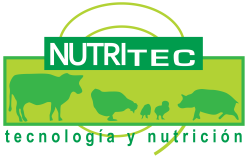Let's start by defining what antibiotics are, these are drugs specifically designed to combat infections caused by bacteria, preventing their reproduction, growth or life as such, both in people and animals.
Resistance to these drugs is created when a response has been generated by bacteria to evade the actions of these drugs. It may be due to indiscriminate or incorrect use, for example, giving lower doses than recommended, or for shorter times than those recommended by the manufacturer or the doctor in charge; provide non-specific antibiotics for the condition that is being treated, and the most frequent of all, provide antibiotics for the slightest disorder that occurs on the farm and does not take into consideration that there are conditions that can be caused by viruses, incorrect handling, fungi, parasites, among others.
According to Torres, & Zarazaga, antibiotics can also be used in animal production as growth promoters. For this purpose, the use of a veterinary prescription is not required, since they are considered feed additives, and there is a positive list of authorized antibiotics depending on the animal species.
The mechanism by which antibiotics promote growth is not fully understood. They basically act by quantitatively and qualitatively modifying the intestinal microbial flora, causing a decrease in the microorganisms that cause subclinical diseases. They also act by reducing the normal flora that competes with the host for nutrients. All this leads to an improvement in productivity and reduces animal mortality. Torres, C., & Zarazaga, M. (2002).
The main problem that this generates is that, by not respecting the withdrawal times in treatments for animals, these traces of drug molecules are present in the products and by-products thereof that are used for the food industry for human consumption. Therefore, when consumed by the human being, these traces are recognized by the bacteria present in the body and, being present in micro doses, a recognition is produced by the bacteria, creating defense mechanisms as a form of survival and that, at the moment of needing therapeutic doses for these agents, these drugs no longer have their full potential due to the defenses created by the microorganisms.
According to Fernández et al, 2003, within the bacterial defense actions that they create, are:
The active expulsion system of the antimicrobial, a kind of expelling pump used by bacteria to excrete residual or toxic products, with which it can also eliminate many of these antibacterial agents.
Decreased permeability of the bacterial wall, with the loss or modification of the entry channels (porins).
The production of enzymes that inactivate antibiotics constitutes the third mechanism, for example anti-beta-lactamases (clavulanic acid, sulbactam and tazobactam).
Finally, some antibiotics exert their action against bacteria by binding to a protein that is essential for their survival. Bacterial resistance occurs when the germ modifies the target protein, changing its function or producing different enzymes.
In the scientific community at a global level, but more specifically in the European Union, there has been a lot of controversy over this issue since there are opinions that working on the elimination of certain drugs as growth promoters in animal feed has been very hasty since there is not enough evidence. However, numerous publications that have appeared in recent years highlight the high percentage of resistance to antibiotics used as growth promoters in strains of animal origin (Torres, C., & Zarazaga, M., 2002). The prohibition of antibiotics as promoters should be understood as a public health safety measure.
Within the recommendations, it is highlighted that new alternatives to the use of antibiotics in animal feed should be sought. In this context, there is the use of additives in the animal diet to control the growth and proliferation of pathogens. The measures that can be used to improve the growth and performance of animals are:
– Prevention of stress by increasing the quality of water and food
animals and above all the improvement of environmental conditions.
– Optimize nutrition to improve the immune status of animals.
– Eradication of animal diseases as far as possible.
– Selection of genetically resistant animals.
– Chemical substances that favor optimization in the production of alternatives to growth promoters and that are safe for animals and humans: such as prebiotics, probiotics, organic acids, enzymes and plant extracts. Gimeno, O., & Ortega, C. (2005).
It can be concluded that the issue of antimicrobial resistance in the livestock industry is one of the most controversial issues since they began to be studied in depth. It should be noted that the importance lies in raising awareness among the people involved in the livestock chain to make responsible use of these drugs, as well as improving management, mainly to be able to alleviate health problems. Emphasize the importance of having trained head veterinarians to be able to make the necessary recommendations and prescriptions according to the needs of each farm. And finally employ the use of additives that help mitigate their use for a cleaner production since it is what animal production is directed towards, as in the case of the European Union.
Quotes:
Arenas, NE, & Melo, VM (2018). Livestock production and emergence of antibiotic resistance in Colombia: Systematic review. Infectio, 22(2), 110-119.
Fernández Riverón, F., López Hernández, J., Ponce Martínez, LM, & Machado Betarte, C. (2003). Bacterial resistance. Cuban Journal of Military Medicine, 32(1), 0-0.
Gimeno, O., & Ortega, C. (2005). Antibiotherapy and veterinary public health; development of resistant microorganisms, resistance mechanisms and strategies for the prudent use of antibiotics. Zaragoza (Spain) pp, 11.
Grande, BC, Falcon, MG, & Gandara, JS (2000). The use of antibiotics in animal feed: current perspective the use of antibiotics in animal feed: an current perspective or use of two antibiotics in animal feed: current perspective. CYTA-Journal of Food, 3(1), 39-47.
Torres, C., & Zarazaga, M. (2002). Antibiotics as growth promoters in animals: Are we on the right track?. Sanitary Gazette, 16(2), 109-112.




